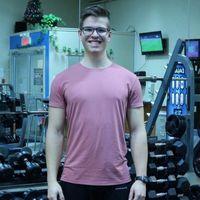Set Yourself Apart From The Competition
The Posturepro Method is a comprehensive training system that teaches you how to assess and correct posture by targeting the nervous system. Unlike traditional approaches, this method focuses on brain-body connections to create long-lasting improvements in alignment, movement, and pain relief.
Watch and learn anytime on desktop, tablet, or mobile.
Here’s what your personal growth path could look like…
After mastering the Posturepro Method, you’ll gain the skills to assess and correct posture like never before:
First…
Understand how posture links to the nervous system for lasting correction.

Next…
Learn advanced techniques to assess and fix movement imbalances effectively.

Then…
Elevate your practice, transform clients’ lives, and stand out in your field.

What You Will Learn
• Posture is controlled by the brain, not muscles—this method focuses on how sensory input affects movement.
• The feet, eyes, and jaw play a critical role in postural alignment.
• Learn why poor sensory input leads to poor posture and how to correct it.
• Explore how posture is controlled unconsciously and cannot be fixed through exercise alone.
• Understand how to assess and correct imbalances in all three planes: sagittal, frontal, and transverse.
• Learn a comprehensive, full-body assessment process.
• Master the use of plumb line analysis to evaluate posture.
• Identify shoulder tilts, pelvic shifts, and spinal rotations caused by eye and foot imbalances.
• Conduct neurological tests like the Romberg and Fukuda stepping test to assess balance and movement.
• Understand the link between eye dominance, foot stability, and posture control.
• Learn how to use specific foot stimulation techniques to restore postural balance.
• Train eye muscles with targeted visual exercises to correct head positioning.
• Address jaw misalignment and tongue posture to improve trigeminal nerve function.
• Understand how motor control is shaped by sensory input and how to apply corrections.
• Learn how a short leg affects spinal alignment and lower back pain.
• Assess for pelvic tilt, sacral rotation, and glute asymmetry to determine structural imbalances.
• Identify when to use heel lifts vs. postural exercises for correction.
• Understand how retained primitive reflexes interfere with movement and posture.
• Assess for Babinski, Moro, and Grasping reflexes to identify neurological dysfunction.
• Learn how proprioceptive stimulation through the feet and eyes can retrain the nervous system.
Part 6: Understanding the Jaw’s Role in Postural Imbalances
The jaw is a critical but often overlooked component of posture. The stomatognathic system, which includes the jaw, tongue, and cranial nerves, plays a direct role in postural stability, muscle tone, and alignment. Jaw misalignment can create compensatory patterns throughout the body, leading to neck tension, shoulder imbalances, spinal misalignment, and even lower body dysfunction.
This section will cover:
• Jaw and Nervous System Connection – How improper jaw positioning impacts postural tone and muscle activation.
• The Bite-Posture Relationship – How malocclusion, clenching, and tongue posture affect head and body alignment.
• Assessing Jaw Imbalances – Identifying TMJ dysfunction, cranial asymmetry, and their role in postural compensation.
• Corrective Strategies – Tools to realign the jaw, including tongue posture training, bite correction, and neurological stimulation.
By mastering this approach, practitioners will be able to pinpoint postural issues originating from the jaw and apply targeted solutions that go beyond conventional treatments.
What happens after you order

Secure checkout page
Click the purchase button above and you’ll be taken to a secure checkout page.

Log into your account
Complete your order and check your email for your login instructions.

Enjoy your new program
Login from your computer or through the app to get started.
Posturepro Method
The Posturepro Method focuses on correcting posture by optimizing how the brain interprets sensory input from the feet, eyes, and jaw. Rather than just treating symptoms, it addresses the root cause of misalignment by retraining neurological patterns.
Feet are the body's foundation and are rich with mechanoreceptors that send vital postural signals to the brain. Any imbalances in foot mechanics lead to compensatory misalignments affecting the knees, hips, and spine. The Posturepro Method corrects these imbalances using sensory-based insoles.
The eye muscles provide critical spatial orientation feedback to the brain. Dysfunction in eye coordination, tracking, or convergence can disrupt posture, causing compensations in the neck, shoulders, and spine. Eye exercises are integrated into the method to restore balance.
The jaw influences postural control through its neural connections to the brainstem. Clenching, misalignment, or improper tongue posture can disrupt this system, leading to head and neck imbalances. The Posturepro Method uses exercises and devices to restore proper jaw function.
By targeting sensory receptors in the feet, eyes, and jaw, the method helps the brain rewire its movement patterns. This leads to long-term postural improvements rather than temporary relief from pain or misalignment.
Most clients experience a 60-85% reduction in pain and an 8-15% increase in strength within one session. Improvements in mobility and posture continue as the brain adapts to new movement patterns.
The method uses neurological and biomechanical tests, including the Romberg Test for stability, Fukuda’s test for foot mechanics, eye tracking assessments, and muscle strength tests like the Extensor’s Test.
Unintegrated childhood reflexes can cause postural imbalances that persist into adulthood. The method includes assessments and interventions that address these retained reflexes to create long-lasting improvements.
What students say about the program
- Reviews
- Questions


Just amazing!
An absolute must! I just saw Annette perform a live posture correction and the audience was very impressed!!!


The course was an eye opener or should I say corrector! I am sorry I did not take it earlier. Always better to spend less on prevention than lots more on the cure! Annette's passion inspired me. Thank you and cannot wait for Posturology Level 3 and 4 next February.










